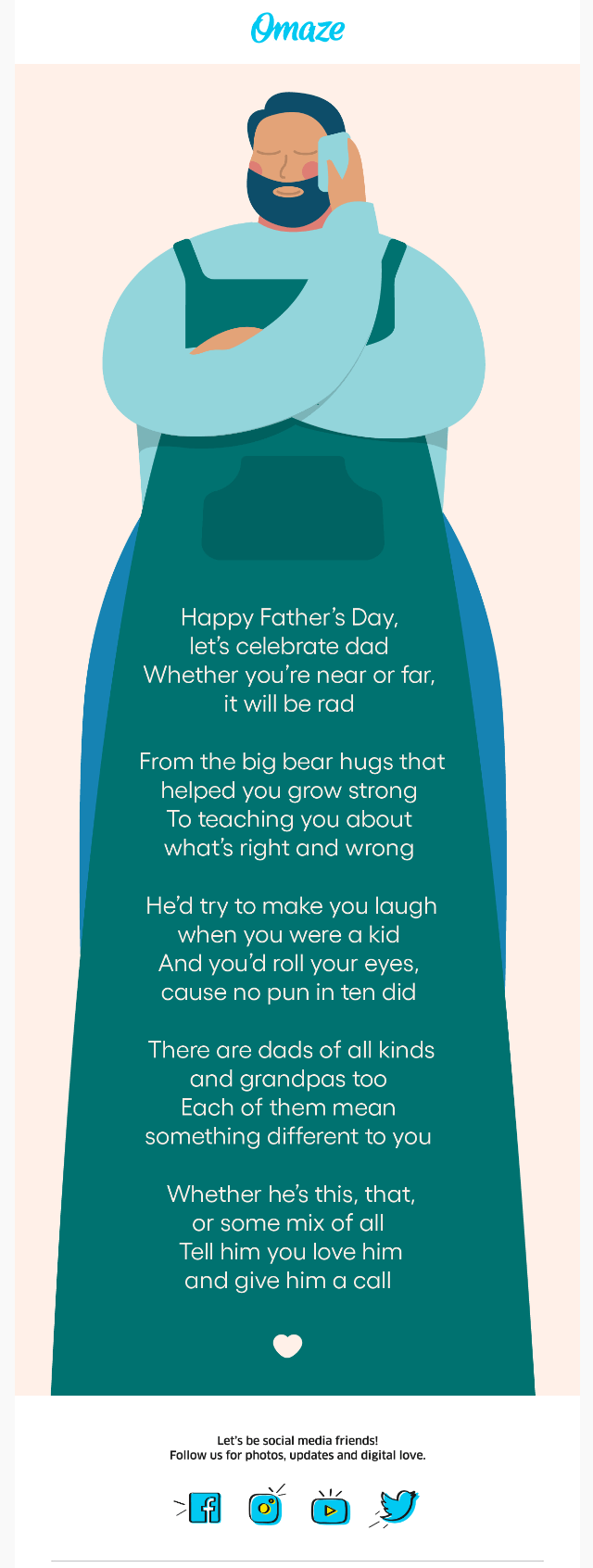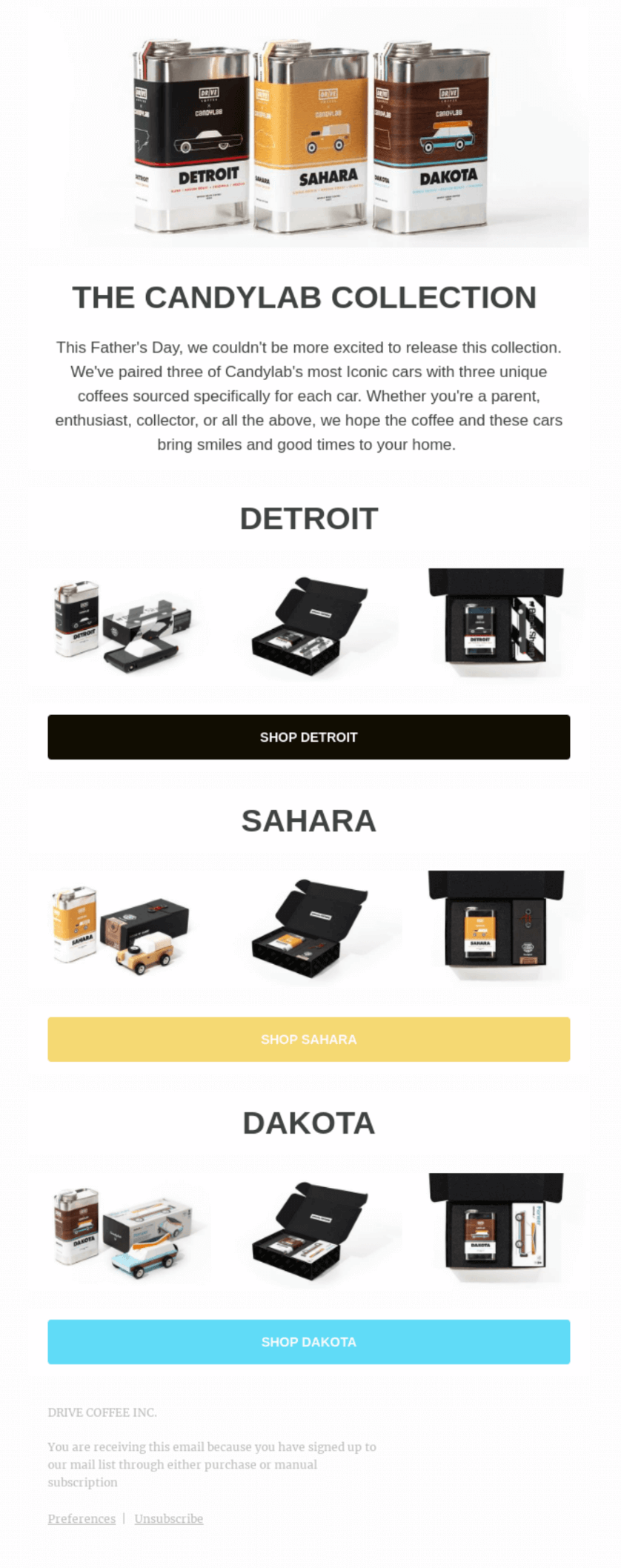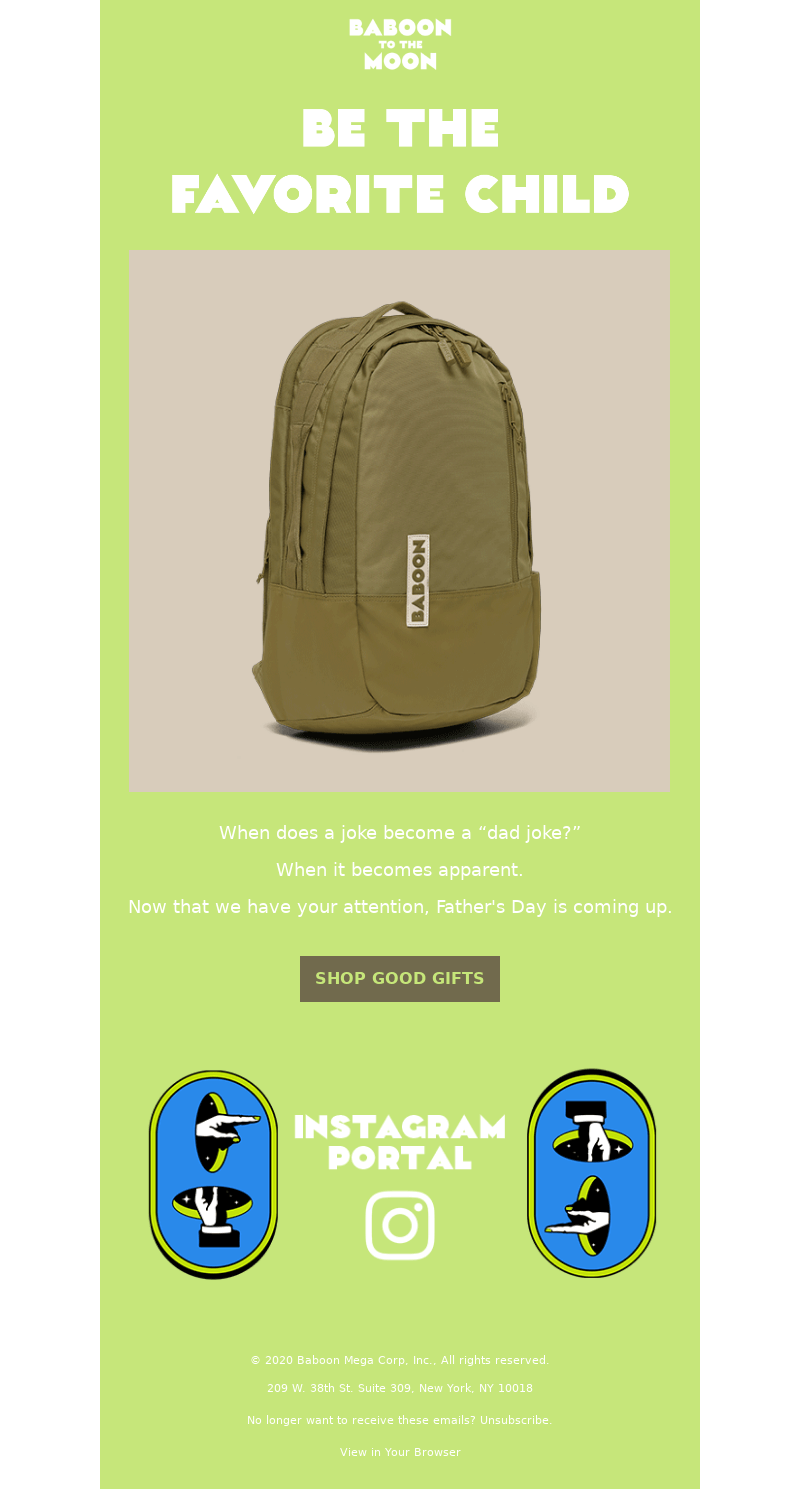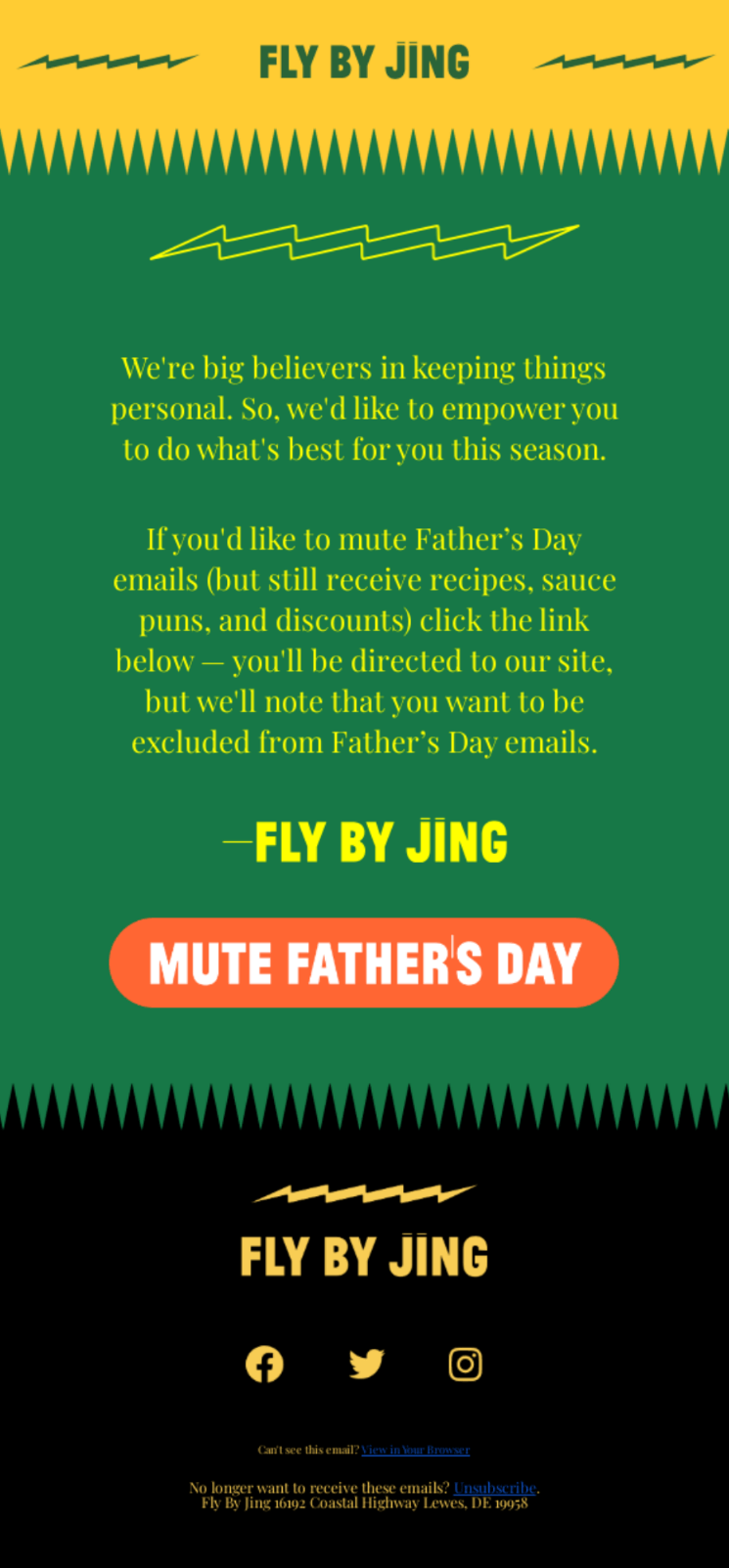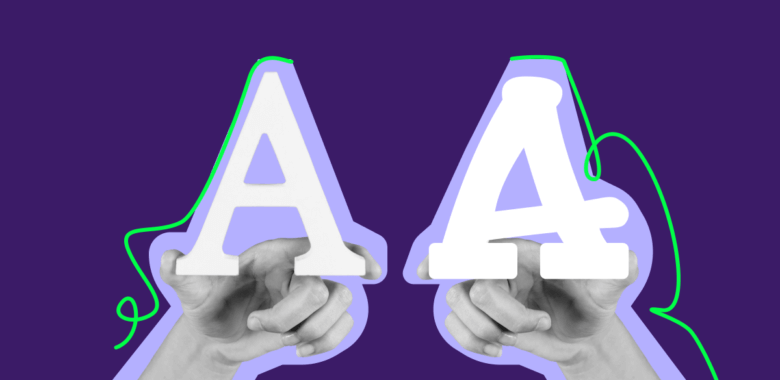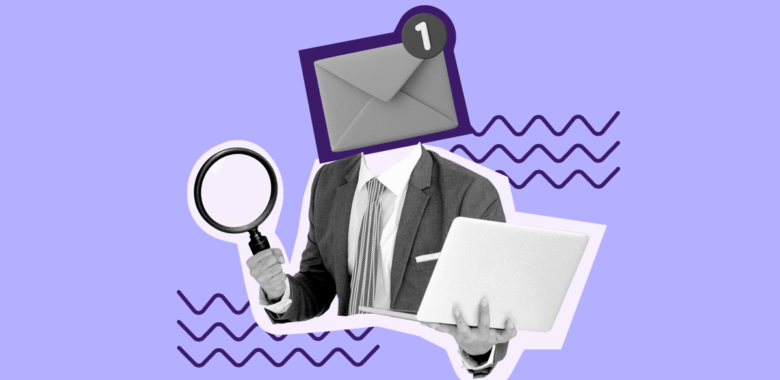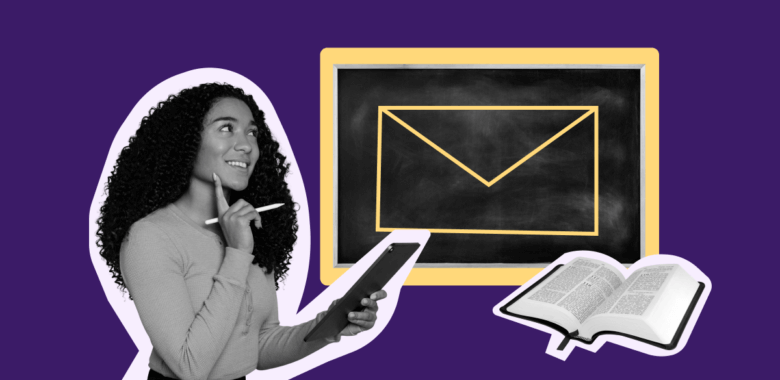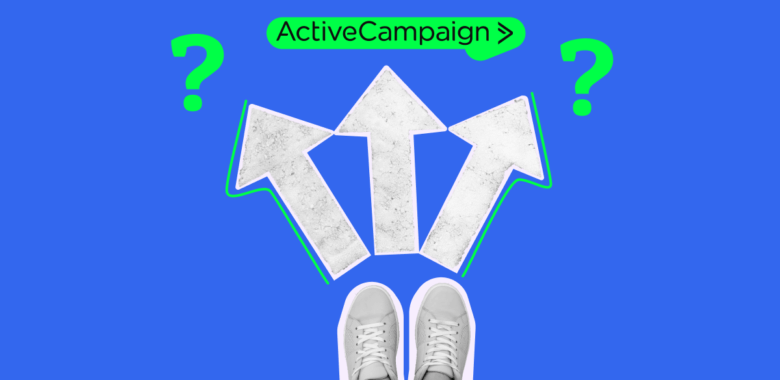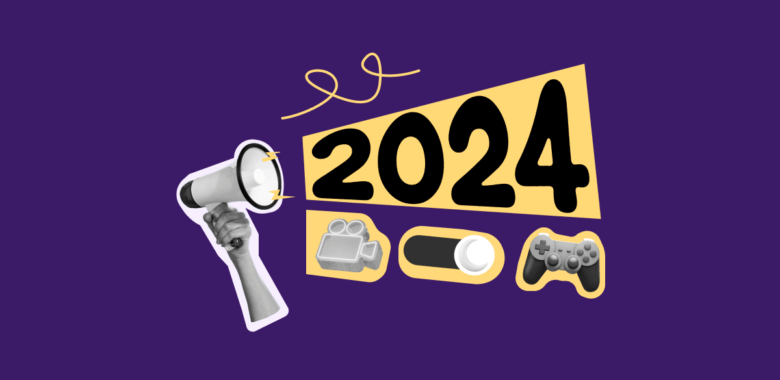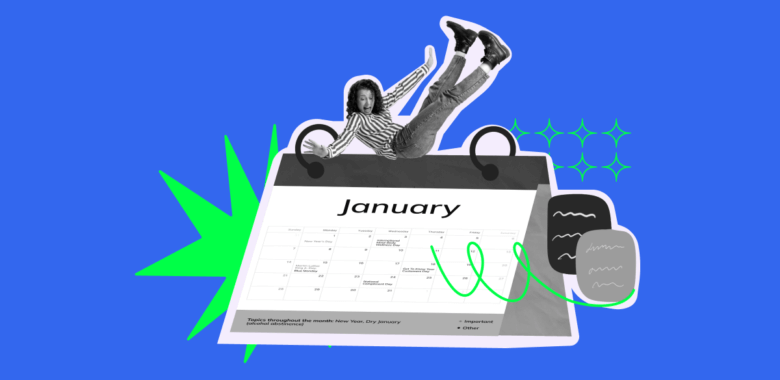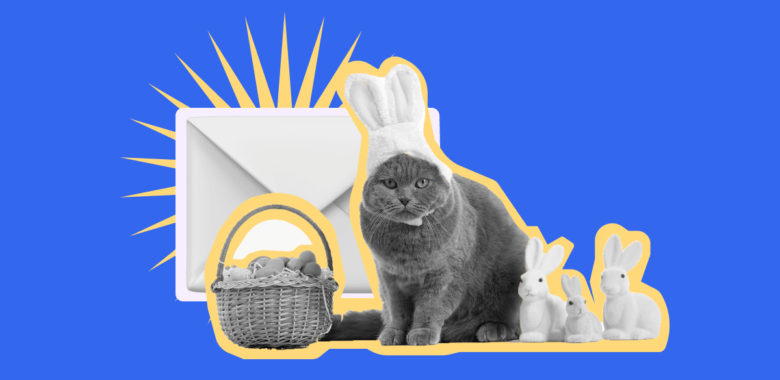How to start your Father’s Day email marketing campaign
Start your Father’s Day mass mailing like any other email marketing campaign — choose a mailing list, think of your target audience and objectives, design emails using templates or from scratch, write a copy, and perform A/B testing. Here, we highlighted three important nuances you should consider while working on Father’s Day mass emails for your business.
Set your goals
We already mentioned that Father’s Day emails increase sales and improve your brand image. And while you can do both at the same time, you still have to prioritize one of these goals when you decide on the email content.
If you focus on sales, a simple gift suggestion is enough. But if you want to communicate with clients and humanize your brand instead of straightforward sales, get more creative. In this case, use promotional emails for topical content distribution — or just wish a happy Father’s Day.
Think of a subject line
Catchy subject lines are important for any email campaign including Father’s Day emails. Here are some strategies you can use to stand out in the inbox:
Being emotional. Make your clients feel closer to their dads and husbands — appeal to their family values. Some of the examples:
- Don’t forget about your father
- To all the rad dads
- Thanks, Dad
- Make your dad happy
- Celebrate HIM this Fathers Day 🙌 (2XU)
Being funny. Although it’s appropriate for Father’s Day, you don’t have to come up specifically with a dad joke for your email subject line. Add a little irony:
- You know it’s almost Father’s Day, right?
- Uh-oh, forgot about Father’s Day?
- How do werewolves sign off their emails? Beast wishes!
- Dad-serious weekend ideas (2XU)
- Father’s Day gifts in an instant (literally) (Bloomingdale’s)
Straight to the point. If you offer a holiday discount or a gift card, you can put this information in your email subject line. Some of the examples:
- Save up to 30% on Father’s Day gifts
- Father’s Day sale is coming
- 2 Days Left: $5 Father’s Day Cards (Lovepop)
- Over 300 New Styles Just Arrived! Just In Time For Father’s Day! (DXL)
Segment your mailing list
Again, segmentation is important for any email marketing campaign. But in the case of Father’s Day campaigns, you have to be especially careful. Here are some criteria you can consider:
- Age — young and old men would be interested in different gifts and would respond to different tones of congratulation emails.
- Gender — for example, emails for women can encourage them to buy gifts for their loved ones and emails for men can encourage them to buy something nice for themselves.
- Purchase history — if you take that into account, gift suggestions will be more appealing to clients. For example, if you’re launching a campaign for a record store, make a gift guide with vinyl releases similar to what your client bought earlier and non-fiction books about their favorite artists.
- Engagement — for example, if some clients don’t visit your website often, remind them about your store and suggest some last-minute gifts for Father’s Day. But sending such emails to clients with more frequent purchases would be inappropriate.
These are the basic criteria — but you can include more, it depends on your end goal.
Give an opt-out option
This holiday, like Mother’s Day, can be a sensitive subject for many people — that’s why giving your subscribers an option to exclude themselves from your Father’s Day email list is a good idea. To do this, send an email with the preference management link in advance. This email doesn’t have to be long — simply express concern and suggest clicking the link to opt out of the email list.
This Father’s Day opt-out email from Fly by Jing is a great example — feel free to use it as a source of inspiration:



